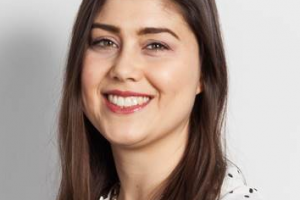This year, with COVID-19 pandemic lockdown in many parts of the country and world constraining most of our communications to video, phone calls, email and text, our interpersonal communication truly lacks the “fullness of interpersonal communication” that St. Pope John Paul II introduced in his general audiences regarding Theology of the Body (1).
How much we lose when we have, at best, distorted views of body language over video or tone-devoid emails and texts!
While we are fortunate to have these various media in place of our sorely missed (well, perhaps not all so sorely missed…but that’s a different story!) in-person communications, these methods of communication have severe limits in their ability to provide us with a platform for developing deeper understanding, exchanging ideas, and ultimately for “bringing [us] closer together” (1).
The critical element of human non-verbal communication
Some popular statistics, observed in multiple parts of the internet, claim that as much as 93% of what we communicate is non-verbal, yet it’s unclear what or how to quantify that.
We DO know, however, that depression and anxiety increases in times of isolation, particularly enhanced by the recent and current lockdowns. These conditions or feelings are very real and are associated with the lack of fullness of interpersonal communication, which primarily misses the presence of another human body in the room and especially touch.
Interestingly, touch is not just about romance, friends and family.
Touch plays an important role in the business world too.
For example, the common handshake in our culture can convey a sense of confidence and camaraderie or an insecure, aloof, lack of connection…and everything in between.
Don’t forget to dance
While touch and affection as a means of expressing oneself allow us to express ourselves through the body in the image and likeness of God Himself who is Love, I would like to focus on how dance, and particularly ballroom dance, provides more “fullness” to “interpersonal communication.”
So, as you consider how to celebrate Valentine’s Day this year, or perhaps next year, consider enhancing your  body language skills with a dance lesson or dance practice!
body language skills with a dance lesson or dance practice!
Not surprisingly, the common sedentary lifestyle behind the computer or in front of the TV has seriously limited the body parts we use to communicate with each other.
You type with fingers through your wrists and forearms, while the full human body is used in dance – from the toes to heel of the foot (and other parts of the foot, such as the inside edge, very important in tango!). From the shoulders to the elbows, to the wrists to the tips of every finger, and from the feet to the knees to the hips to the chest to the head – and there’s so much to say about how the pelvis moves, especially in samba and those latin hips.
I haven’t even described facial expressions, but I’m sure that at this point you’re already more interested in the searching for some videos of the human body’s dynamic movement in these ballroom dances than in the words on this page!
Saint Pope John Paul II explains
Saint Pope John Paul II explained that persons “communicate precisely on the basis of the common union that exists between them, both to reach and to express a reality that is peculiar and pertinent only to the sphere of person-subjects.”
While I’m not a theologian, this phrase suggests to me that this special reality that only persons acting on their own individual free-agent selves, as beings of rational thought, share this truth of existence and reinforce it. And, that this is part of what keeps us sane and grounded in reality by affirming one another in this common understanding.
Through ballroom dance in particular, I imagine this phrase as being manifest in the way that a man and woman show the complementarity of their bodies united in the movement of dance to express a story about their relationship, while pointing to the reality of love; of God in the beauty of their bodies.
As an aside, I freely acknowledge that various dance styles (consider swing dancing, ballroom, folk, or community dancing) can promote different stories.
Whether looking for the mother-son, father-daughter, brother-sister or other types of interpersonal relationships; for the sake of Valentine’s Day, let’s focus on the romantic relationship!
Romance, Dance and the Theology of the Body
The common theme of Theology of the Body is the gift of self between man and woman.
In dance, this gift-giving occurs through the role of leader and follower in which the leader gives a clear lead by making and implementing a decision of how and when to move his body. If there is indecision and lack of clarity, it only serves to generate confusion and poor communication (failure of the operator of the instrument of his body by hesitation or mixed signals, not integrated movements of his body).
On the other hand, the follower needs to remember the first aspect of love from 1 Cor 13:4 – to be patient. She waits for the decisive lead in order to respond and cooperate, and then bring the move to its fullness of beauty and completion.
While the follower in a ballroom or partner dance does not act on anticipations (this is not choreography that I’m discussing here), she “listens” as the leader “speaks” through his body. Then she “speaks” with her corresponding action. Each of them is responsible for his or her own posture, frame or tone of the muscles of the body, holding the body in positions relative to the dance partner to allow for communication through the body.
If the bodies are not touching in a way which provides connection (noodle arms do not provide connection, limp limbs that are disconnected from the rest of the body, depending on the style of dance, do not promote communication), then ignorance or interference can occur like a bad connection on the phone or video or a dropped call leading to a missed signal.
In order to communicate well through the body in dance, lessons and practice help develop body language skills, just as acting classes or speaking coaches provide assistance with body language for other performance-type activities.
Self-control, the Holy Spirit, and Uplifting Beauty
Practicing the Holy Spirit’s gift of self-control over the body, especially in relation to the other, can potentially help us dialogue about how, when and how much specific parts of our bodies may interact within an environment of learning communally (group or partner classes).
It is a gift to be able to interact in-person and it is a gift to be able to use our full bodies in the expression of dance, which some say is the way that the soul can express through the body!
Given the culture and mainstream media’s constant demonstrations of unhealthy ways to treat and to communicate through the body, especially sexually, we have an opportunity to learn how to use the respectful ways of interacting through the body, male-to-female, in dance.
How wonderful it would be to learn how to develop those body language skills now, so that when we interact more in-person we can have a greater “fullness of interpersonal communication” beyond this period of mandated lockdown!
Consider trying some ballroom dance with the one you love or within your family or household, anything from waltz to rumba to cha cha to swing during this COVID-19 lockdown Valentine’s Day.
Notice how much more you can appreciate with non-verbal communication and all the ways in which your whole body communicates beyond words – how can you connect more using the language of dance to express the soul through the body with those you love?
————
(1) Saint Pope John Paul II. General Audience. Wednesday 19 December 1979. http://www.vatican.va/content/john-paul-ii/en/audiences/1979/documents/hf_jp-ii_aud_19791219.html Accessed 2/6/2021.



You must be logged in to post a comment.